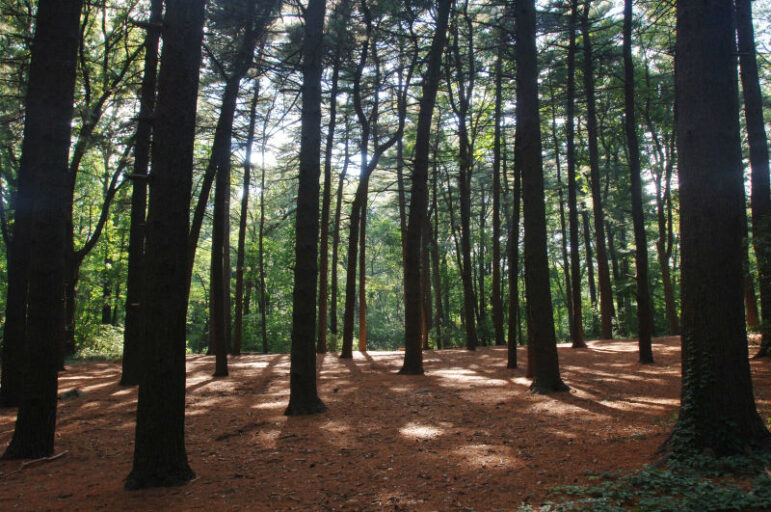“New York City’s forested natural areas receive just 0.0042 percent of the city’s funds, basically a rounding error in New York City’s over $100 billion budget.”

NYC Parks
Forest Park in Queens.Would you believe that more than 40 percent of New York City is green? Though it’s hard to imagine among the skyscrapers of midtown or Brooklyn’s industrial areas, less than 60 percent of our city is built, with the rest comprising landscaped or natural areas—green spaces that cool our neighborhoods and capture carbon, as well as provide a myriad of physical and mental health benefits to New Yorkers.
One prominent natural area is in Forest Park in Queens, and on any given weekday, volunteers trained by the Natural Areas Conservancy and other organizations gather first thing in the morning under the park’s canopy to plant trees, maintain trails, cut back invasive vines, and clean up trash.
Talk to these volunteers, and they’ll give you different answers for why they do this work. Some simply enjoy being outdoors in their spare time. Others want a safe, healthy space for their children. For a few, the park is the main reason they moved to a nearby neighborhood, and there’s some local pride in wanting it to look its best. But all agree that Forest Park and other city parks like it are an essential community asset that must be cared for.
They’re not wrong. Earlier this year, the Natural Areas Conservancy released a report finding that the natural areas in our parks—such as forests, wetlands, and grasslands—provide massive return on investment when properly maintained. New York City’s forests offer $4 billion in benefits each year, from recreational value to public health savings by reducing pollution-related illness in adults and children. And for about half of New Yorkers, our city’s parks are the only place they experience nature.
Unfortunately, natural areas are woefully underfunded—one of the main reasons a small army of volunteers like the Natural Areas Conservancy’s trail maintainers must regularly manage these areas in partnership with NYC Parks staff.
Disinvestment in parks has been an unacceptable norm for decades, and natural areas in particular continue to receive short shrift. Parks are currently allocated 0.6 percent of the citywide budget, which is well below the amounts that other large cities across the country invest in their green areas.
But New York City’s forested natural areas receive just 0.0042 percent of the city’s funds, basically a rounding error in New York City’s over $100 billion budget. This amount doesn’t even account for the needs of our vulnerable wetlands, which support hundreds of different species of plants and animals, not to mention being on the literal frontlines in the fight against climate change and sea level rise in our communities.
That’s why the Natural Areas Conservancy has joined with more than 400 groups and organizations to rally for the allocation of 1 percent of the city’s budget to parks. This amount includes a minimum of $3.5 million in next year’s budget to protect, manage and improve natural areas.
For us and our trail maintainers, this fair funding is non-negotiable. A sufficient budget for NYC Parks ensures that the parks we call home are valued and preserved for this generation and the next. Our families and our neighbors, particularly those in lower-income communities, need a green and vibrant parks system, one that cleans the air, filters the water, and provides an important space for residents to gather safely.
Just as it takes dedicated people to care for these spaces, it takes people to demand that our elected officials fully support them. We encourage every New Yorker to contact their councilmember and let them know that 1 percent funding for NYC Parks is critical and that natural areas must be protected.
Sarah Charlop-Powers is executive director of the Natural Areas Conservancy, which since 2012 has championed urban natural areas in New York City and across the nation through innovative research, partnerships, and advocacy.
Robert Hay is a resident of Kew Gardens in Queens and has been volunteering in New York City parks since 2015, most recently as a trail maintainer in Forest Park.








